How Smart Boats Could Help Solve the Overfishing Crisis


EDF's Smart Boat Initiative seeks to partner with stakeholders in the fishing industry to test technologies such as sensors, networks and data analysis that could transform fishing vessels into "smart boats."
Overfishing involves catching fish at rates too high where fish stocks cannot recover. This unsustainable practice harms the environment, puts workers along with their livelihoods at risk and breaches government regulations.
The Food and Agriculture Organisation (FAO) estimates that fishing and aquaculture account for 12 percent of the world population's livelihoods and supply 17 percent of global animal protein in people’s diets. Yet overfishing has depleted many fish stocks and continues to push fishery workers farther away from the coast and into far more dangerous waters.
Environmental Defense Fund (EDF) has a plan to combat the issues caused by overfishing with the launch of its Smart Boat Initiative. EDF has started working with large- and small-scale partners to test sensors, networks, data analysis and other pioneering technologies that can turn fishing vessels into "smart boats."
Why it’s imperative fishing goes digital
Through its research, EDF reports that we’re running out of time to solve the crisis of overfishing. If initiatives to aid the fishery industry do not move forward, 80 percent of all fisheries could be compromised by 2030. Nearly one billion people may have their livelihoods disrupted, and 3 billion people who rely on fish as an important source of protein may lose it. These are just the human impacts.
The silver lining here may very well be technology and its ability to bring age-old practices up to speed. The time has come to explore the benefits the fishing industry can reap from equipping boats with low-cost sensors and connecting vessels through satellite internet and artificial intelligence. Through EDF’s new initiative to harness the digital revolution to accelerate networked fisheries, real-time data could streamline the industry’s circle of information.
Sensors with cameras, broadband coverage and data analysis software can automate processes—previously done with paper and pen. One process where automation would significantly reduce long-term operating costs and increase time savings is catch monitoring. Catch monitoring lets fishermen know the right amount of fish to take out to keep stocks healthy. Typically a fisheries regulator would require an observer on board a fishing vessel. The observer would look at the catches and write down what was occurring and bring the logs back to shore to be entered into a management system. Sometimes this process can take months before that data is processed and recorded. The biggest opportunity with electronic catch monitoring is speeding up the process and bringing it to real-time. In most cases this is an economically viable alternative for observer coverage.
Artificial intelligence (AI) offers another opportunity to revolutionize sustainable fishing. AI can classify observed catches by species and assist regulators in getting a more complete picture of legal harvests and unlawful operations, such as whether a vessel is fishing inside a protected area or without permit.
Greater efficiency, profitability and sustainability
EDF wants to prove "smart boats" can redefine fishing and how fisheries can be managed so the industry can proceed with greater efficiency, profitability and sustainability. The organization’s overall mission is to preserve the natural systems on which all life depends. Guided by science and economics, EDF works to find practical and lasting solutions to serious environmental problems.
What can be gained from smart boat technology includes tracking the kind of fish fishermen want to catch, ensuring fish meet size standards as to help stocks mature and replenish, which helps reduce some of the detrimental environmental impacts created by overfishing. If speed and efficiency gains aren’t compelling enough, worker safety is also increased by connecting vessels at sea. From vessel to market, smart boat technology can work to sustain healthy, productive cycles.
Image credit: Mali Maeder/Pexels
Sounding the Alarm: Companies Can Do More to Support Humanitarian Relief


Women gather water on Somalia, where 4.2 million people require humanitarian assistance for life’s basics, such as food and water.
In too many water-distressed places, up to 75 percent of people’s water needs remain unmet. Globally, more urgent action is needed to reach the nearly 2 billion people who still drink unsafe water each day.
For World Water Day to mean something to the people that NGOs and community organizations serve, current donors need to do more, and we also need new sources of funding. I’d love to see corporations playing a far more substantial role and support this cause because it’s the right thing to do, even if it doesn’t appear to be in their short-term economic interests. Long-term, it is. We live in an interconnected world.
Access to water is a human right—one that 80 million people are denied as a direct result of humanitarian crises. Yet, last year government and institutional donors met only 42 percent of those water needs.
The alarming situation is particularly acute in humanitarian contexts impacting:
- 900,000 Rohingya refugees in settlements where 89 percent of the water is contaminated.
- 2 million Yemeni children who are malnourished due to a lack of safe drinking water.
- 7.1 million people in South Sudan who need life-saving nutrition and water aid despite the recent peace agreement.
This drives waterborne diseases and malnutrition, which impacts 821 million people around the world. Addressing the issue could have a powerful multiplier effect: Every $1 spent on programs to eliminate malnutrition can deliver $16 in return. It can also be a life or death issue.
A life and death issue
In Somalia, a record 2.6 million people have left their homes due to climate shocks, drought and armed conflict. It is one of the largest internally displaced populations in the world. But the needs don’t end there.
One-third of the country’s entire population, or 4.2 million people, requires humanitarian assistance for life’s basics, such as food and water. Less than half have access to sanitation, and there’s a high risk of violence when using those very basic facilities. In my view, it’s a moral outrage. But, even in this complex context, there is innovation and hope.
One approach is to help rehabilitate berkads, traditional and sustainable reservoirs for capturing precious water during the increasingly unpredictable rainy season. At Action Against Hunger USA, we also drill borehole wells that run on hybrid solar power. To increase sustainability, our teams work closely with the State Agency for Water Energy and Natural Resources to form community-led water management committees, which are typically gender-balanced.
This progress can feel tenuous. Halimo Aden and her family fled Wane village after its only water source, a shallow well, was taken over by an armed opposition group. “We kept moving from one area to the other in search of water for our children and our livestock,” Aden said. Armed groups target water collection points as a de-facto weapon in the area’s protracted conflict. “They know we cannot do without water, so they use it to make the community living in the area flee for their lives.”
This also makes Aden and her young children more vulnerable to water-borne diseases like cholera, which can be fatal when untreated. Among other impacts, cholera interferes with the body’s ability to get enough essential nutrients—and undernourished children are 11 times more likely to die than their better-nourished peers.
Fortunately, Aden’s family found a receptive host community, and our livelihoods team equipped them with farm inputs and training to help prevent malnutrition. Their ongoing well-being depends on access to safe water, just as it does for millions around the world.

Photo above: Halimo Aden and her daughter collect water for their new garden.
The World Health Organization reports that 50 percent of child malnutrition is related to unmet water needs. Half the time, when a child younger than five dies, malnutrition is to blame. Every day, more than 5,000 children lose their fight against hunger’s deadly effects. That’s more than 2 million preventable child deaths each year.
The world needs a better way to deal with hunger and water-related issues. Together, forward-looking NGOs are working alongside government to create them. To succeed, we need the private sector to be bold enough to fund innovation, and to sustain their focus on water and hunger well beyond World Water Day.
Bold donors are essential
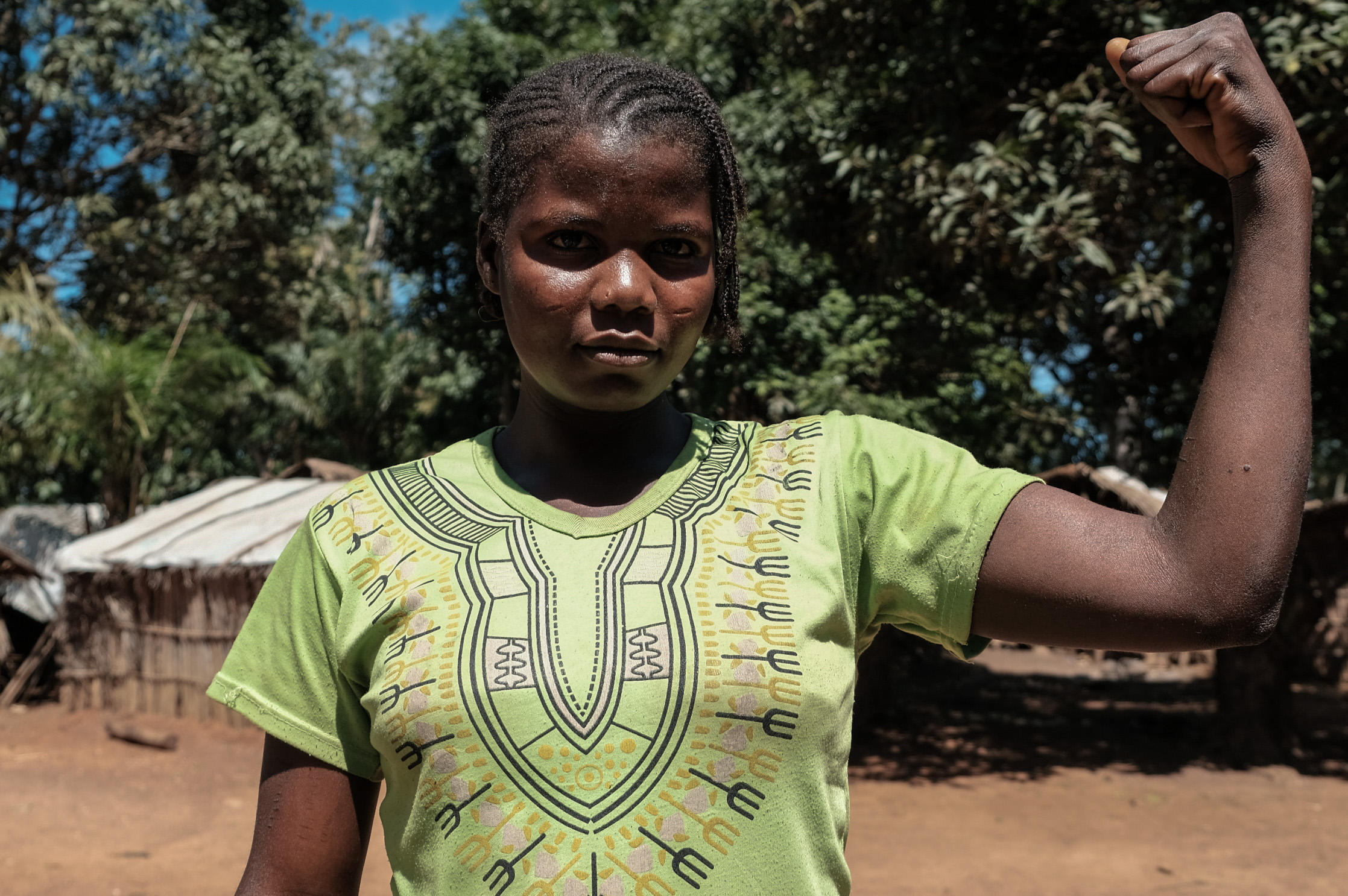
Meaningful change will require a combination of long-term, sustainable solutions and the willingness to do whatever it takes to address short-term needs. Creating and maintaining wells, fixing water and sanitation networks, and delivering drinking water by truck are all essential interventions.
We all want efficient, sustainable, long-term solutions, but we can’t leave millions of vulnerable people without aid. It may sound counterintuitive, but more donors should be bold enough to fund short-term, expensive and unsustainable solutions. Sometimes, that’s the only way to keep people alive.
Politics can make the situation more complex. For example, some refugee host communities are reluctant to allow investment in permanent infrastructure, such as drilled wells, which suggest that temporary camps aren’t so temporary after all. Companies can play an important role, using their voice and access to advance long-term solutions that meet everyone’s needs. That starts with a meaningful focus on the issue.
World Water Day is an opportunity for change. That is why we’re calling on international companies to take action on hunger and water as part of their sustainability, philanthropy and advocacy portfolios. Even when donors have a primary focus on education, health, the environment or other issues, they will have a more lasting, far-reaching impact on those concerns if they help ensure that basic nutrition, water, sanitation and hygiene needs are addressed first.
Image credits: 1) Khadija Farah for Action Against Hunger, Somalia; 2) Action Against Hunger 3) Paul Lorgerie for Action Against Hunger
4 Companies Offering Progressive Benefits For Women


These four companies recognize the need to provide resources for women, and have shown leadership by launching innovative solutions for supporting female employees.
Though women make up over 40 percent of the labor force in countries like the U.S., Canada and Japan, research shows that female workers still earn less and are less likely to advance to leadership roles. More companies now recognize the need to provide resources for women, and some are coming up with innovative solutions for supporting their female employees. These benefits are allowing companies to be more successful since women can bring a different perspective to a problem and can help come up with creative ways to solve it—and, of course, help with recruitment and retainment. Here are just a few companies leading the pack.
Nestlé
Earlier this month, Nestlé laid out a plan to get more women into executive positions. Among many changes, the global food giant pledged to eliminate conditions that create gender wage gaps, enhance mentoring programs to prepare women for managerial positions, and encourage the use of the company’s paid parental leave and flexible work policies.
IBM
More than 90 percent of IBM’s female employees participate in mentoring programs, reports Working Mother magazine. The global technology employer of 366,000 people worldwide is also paving the way in terms of helping aspiring mothers build families while maintaining their careers.
For example, the company reimburses full-time employees for fertility services including in vitro fertilization, egg freezing and surrogacy. This allows women to advance their careers and not have to give up their goals of having children.
The company also provides support groups for working parents and caregivers. Often times, women are responsible for taking care of aging relatives and other family members, with women spending roughly twice as much time on care and other unpaid household activities than men, according to the World Economic Forum. Support groups such as this allow women to know that they are not alone and offer them a chance to learn from others who have been there.
Starbucks
Last year, Starbucks achieved 100 percent pay equity between men, women and minorities. The company publicly shared the principles and tools it used to reach this goal in hopes that other employers will join in working toward pay equity, Lucy Helm, chief partner officer at Starbucks, said in a public statement.
Achieving equal pay would add approximately $512 billion worth of income to the U.S. economy, according to the Women’s Institute for Policy Research. Unsurprisingly, companies that are transparent about their wages also have a better time recruiting top talent. Though Starbucks was in the news last year over an incident at one of their stores in Philadelphia that many called racial profiling, this pay equity milestone is something that can help the company bounce back from the negative light that was put on them.
Accenture
Professional services firm Accenture is working to achieve a 50-50 gender-balanced workforce by 2025. Already, women represent 43 percent of the company’s global workforce of nearly 500,000. At the management level, 30 percent of company leaders and 40 percent of external board members are women, dwarfing other major corporations.
To achieve gender balance in its workforce, Accenture is leaning on time-honored programs like mentoring and employee resource groups (ERGs), along with more modern management structures like flex scheduling. All Accenture employees can set their start and finish times, work remotely, or work more hours over fewer days.
The company also works with organizations like the Network of Executive Women (NEW) to advance women’s equality in the workplace. "When I'm talking to my peers, what they recognize is they can't do it with the same leaders," Julie Sweet, CEO of Accenture North America, told CNN. "Diversity, I think, has become a real business imperative at the very top with CEOs who are facing massive disruption.”
Image credit: Pexels
Accountability for Plastic Production Is on the Horizon
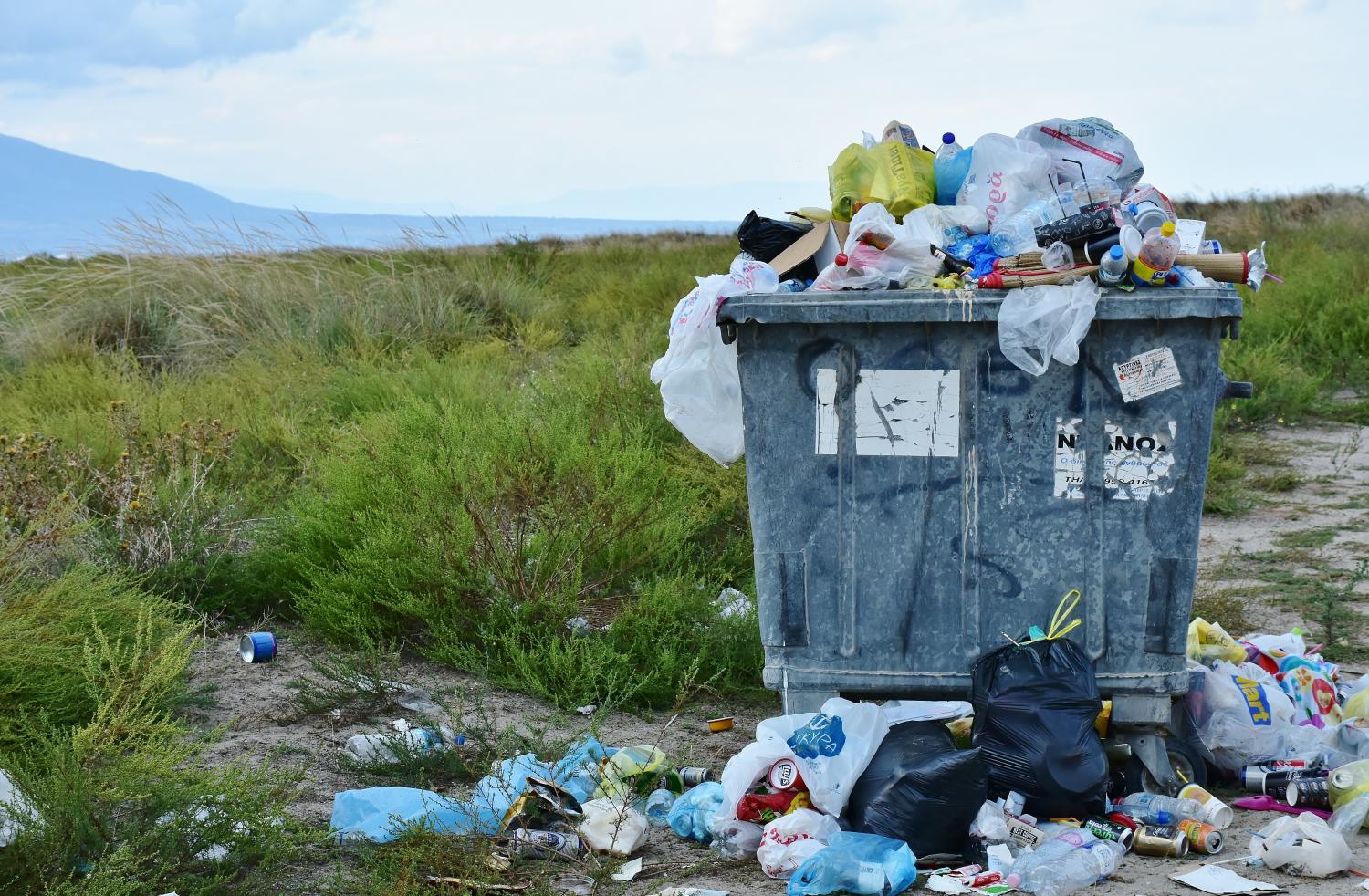
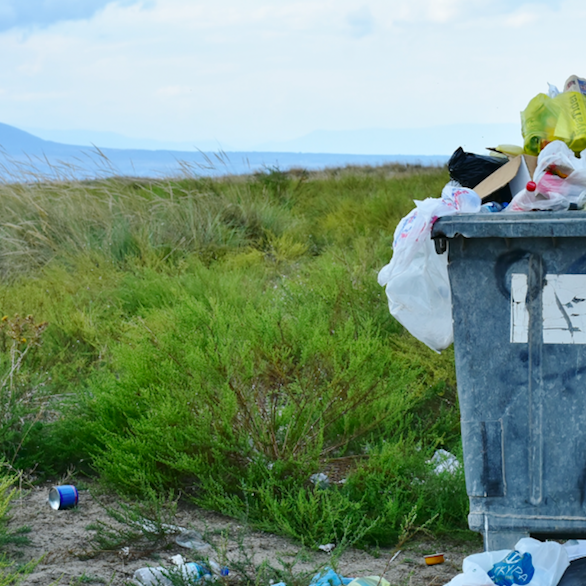
For the first time ever, major manufacturers have published data on their total volume of plastic packaging - offering rare insight on the breadth and depth of the global plastic problem, as well as a tool to keep companies accountable.
In October of 2018, the Ellen MacArthur Foundation and U.N. Environment teamed up to launch the New Plastics Economy Global Commitment. The goal was simple; the scope — enormous. They set out to end all plastic waste and plastic pollution.
Thursday, March 14, marked a major milestone for the initiative as they made huge strides toward their goal. For the first time ever, major manufacturers have published data on their plastic packaging volumes. It’s a rare insight that gives us invaluable information on the breadth and depth of the plastic problem, as well as a tool to keep companies accountable.
Much like governments ineffectively pledging to curb global warming every few years, companies have often made vague promises to reduce waste and recycle more with mixed results. Without transparency, however, there is no accountability and those promises can result in accusations of greenwashing.
As a reminder, “greenwashing” is when companies mislead consumers to think that they are actually doing more for the environment than they actually are—a frequent complaint of some stakeholders. It’s an insidious practice that is all too common; examples can be found every day. From putting buzzwords like “eco” on packaging to sponsoring environmental nonprofits, these actions don’t even scratch the surface of the core issue and merely serve as distractions.
Examples of companies being accused of greenwashing include Coca-Cola’s recycling initiatives, including a 2019 announcement to give away $5 million in recycling grants. The company has been criticized for lobbying against bottle bills, which are widely accepted as the most effective tool for incentivizing consumer recycling. In addition, we also have Unilever’s 2010 commitment to cut its environmental footprint in half by 2020—which was quietly pushed back to 2030.
In fairness, Coca-Cola and Unilever have opted to reveal the stats on their plastic production voluntarily—that’s not a prerequisite of the New Plastics Economy deal. We know that Coke produces 3 million metric tons of plastic a year, or to put it in perspective, about 200,000 bottles a minute.
Still, kudos have to be given to the signatories, which include companies, cities, and governments and number over 350 participants. Signing the New Plastics Economy Global Commitment was optional; there was no penalty for electing not to sign. Perhaps they, too, were finally caught up in the cultural zeitgeist of wanting to protect the planet and preserve our natural resources.
Notable parties include such manufacturing giants as Carrefour, Nestlé, SC Johnson, Coca-Cola, Unilever, Colgate Palmolive, Danone, Mars and Apple. The pledge they took consists of three directives:
- Eliminate problematic or unnecessary plastic packaging and move from single-use to reuse packaging models.
- Innovate to ensure 100 percent of plastic packaging can be easily and safely reused, recycled, or composted by 2025.
- Circulate the plastic produced, by significantly increasing the volumes of plastic reused or recycled into new packaging.
The New Plastics Economy is the first rung on the ladder toward achieving a truly circular economy. “Circular economy” isn’t just a sustainability fad or buzzword; it’s an overhaul of the production-consumption system that conserves resources and energy.
The benefits are manifold; just ask the Ellen MacArthur Foundation. Businesses recapture material and processing costs, while consumers save money on replacements by reusing and repairing. The environment is restored and replenished by carefully considering the end-of-life strategies for products, which leads to more productive and bountiful resource generation.
Recycling, while a good practice, isn’t the end-goal. It’s necessarily less material-efficient than simply designing products to be collected and reused. With proper systems in place, it will be less cost-efficient, too. Like all paradigm shifts, an upfront investment will be necessary to realize the benefits.
While the New Plastics Economy Global Commitment represents an important step in addressing the plastic pollution crisis, it’s important to remember that the issue is not solved. We cannot afford to become complacent.
As stated in the report summary: “The Ellen MacArthur Foundation welcomes these initial efforts, but calls for more action to eliminate problematic and unnecessary plastic packaging, and a greater shift to reuse delivery models that reduce the need for single-use packaging.”
Image credit: Pixabay/RitaE
Arts and Entertainment Venues Begin to Turn the Page on Plastic


Watch for the backlash against single-use plastics to continue, as large entertainment and cultural venues begin to align their values with the youthful audiences they seek to attract.
Environmental activists may march in the morning, and this week they may be stepping up their efforts around World Water Day on Friday, but their evening’s entertainment may take place in a gallery, music festival or concert hall awash in plastic water bottles along with plastic straws, cups, plates, bags and cutlery. That disconnect is beginning to change, as large entertainment and cultural venues start to align their values with the youthful audiences they seek to attract.
No more plastic bottles at The Midway
The first large-scale venue to take the no-plastic-bottle plunge in the U.S. is The Midway in San Francisco, California.
Last December, The Midway launched a commitment to remove single-use plastic water bottles from the premises, in partnership with the ocean health organization Lonely Whale. As part of this partnership, the new arts and culture venue in the city's Dogpatch neighborhood held a multidisciplinary art exhibit last week in collaboration with organizations including the Surfrider Foundation and the Oakland A's baseball team (we feature one of the exhibit's artworks in the photo above).
The task is a complicated one. The Midway is a relatively new complex that bills itself as a “sprawling 40,000 square-foot venue for the public to engage with a variety of exhibitions, workshops, performances and special events” with “art, food, music and emerging technologies under one synergistic and collaborative roof.”
Nevertheless, the complex is on track to eliminate plastic bottles by May, for all events. Single-use aluminum cans are still allowed as a more sustainable option, and The Midway is planning to introduce free filling stations for reusable bottles this year. In the meantime, bars at the complex are providing refills.
The scale of the venue provides for impactful action. For example, the The Midway Gallery and Artist Studios estimated that the venue would eliminate more than 25,000 plastic bottles on New Year’s Eve alone.
In an interesting coincidence of names, the Pacific island of Midway—the locus of a decisive World War II battle—has also become a focus for the fight against ocean plastic pollution.
No more plastic bottles at Glastonbury
Another plastic pollution prevention milestone arrived earlier this year, when the gigantic U.K. Glastonbury music festival announced that it is banning sales of single-use plastic bottles on its premises.
Attendees will be allowed to bring in their own plastic bottles, though festival promoters are encouraging them to bring reusable bottles and refill them onsite free of charge.
The move will make a considerable impact. According to the organizers, vendors at Glastonbury sold more than 1 million beverages in plastic bottles in 2017.
Partnering for an ocean plastic solution
One pattern that has already emerged from just these two examples is the importance of partnering with a knowledgeable organization.
The Midway’s partner, Lonely Whale, was organized in 2013 as a platform for “radical collaboration” to stop ocean plastic pollution. Fast Company named Lonely Whale among the “most innovative” organizations in the not-for-profit category for 2019, with this observation:
“Teaming up with Dell, General Motors, Trek Bicycles, Ikea and others, the organization launched an initiative called NextWave that calls on its member companies to do more to keep plastic out of the ocean by altering their packaging and supply chain. NextWave member companies are currently on track, in alignment with U.N. SDG 14.1, to have diverted a minimum of 25,000 [tons] of plastics, the equivalent to 1.2 billion single-use plastic water bottles, from entering the ocean by the end of the year 2025.”
Similarly, Glastonbury has engaged with the nonprofit organization WaterAid to provide 37 water refill kiosks at this year’s festival. Building on a long-running partnership with Glastonbury, WaterAid plans to arrive at the festival in force with 600 volunteers. In addition to refilling water bottles, the volunteers will work on tasks such as collecting recyclables and cleaning toilets.
WaterAid sees Glastonbury as a teaching opportunity:
“Without home comforts—whether queuing to get a drink, waiting to use the toilet or not being as clean as they’d like to be—festival-goers can start to understand what it’s like for more than 844 million people living without clean water and the 2.3 billion people with nowhere safe to go to the toilet. It therefore presents a great opportunity to show the difference our work is making across the world.”
Of whales and teachable moments
Speaking of whales and teachable opportunities, earlier this week images of a plastic-filled whale shocked the Internet. Researchers were horrified to find 88 pounds of plastic in the stomach of a young Cuvier’s beaked whale. The whale was found dying in Philippine waters, its stomach packed so tightly with plastic that it was “literally as hard as a baseball.”
As of press time, a complete list of the items in the whales’ stomach is not available. For the time being, the researchers did note that rice sacks were prevalent, along with plastic bags from local grocery chains.
Peak plastic: Over before it begins
The oil and gas industry has been banking on plastics and other petrochemicals to balance their bottom line as the transportation and building sectors begin to ease away from fossil sources. However, the recent actions by The Midway and Glastonbury are pointing to a fatal weakness in that strategy.
Interest in reducing ocean plastic pollution is already gathering steam, with recent bans on plastic straws functioning as conversation-starters for more action.
Among some of the notable moves taking place recently, AB InBev’s Corona brand is promoting its new non-plastic six-pack rings as part of an industrywide solution. Smaller brands like the high-end fashion company Mara Hoffman are also introducing recovered plastic fiber into their supply chains. In particular, plastic recovered from oceans and coastal communities has become a commodity. Another effort to monetize plastic waste is through new plastic-to-fuel technology.
Still another significant development in the area of monetization occurred last month, when the U.S. Department of Energy’s National Renewable Energy Laboratory (NREL) announced an new, energy-efficient method for upcycling PET plastic bottles and other plastic items in combination with bio-based compounds.
The new hybrid material, called fiber-reinforced plastic, is stronger than its virgin petroleum-based counterparts. According to NREL, the new material is sturdy enough for use in snowboards, wind turbines and vehicles.
On the heels of the aforementioned whale's death, look for the anti-plastic activity to accelerate as corporations seek more sustainable alternatives in their supply chains.
If stakeholders in the oil and gas sector are depending on plastics and petrochemicals for a lifeline, they may want start thinking about the next move after that.
Image credit: The Midway SF/Facebook
The SDGs as a Global Language for Business
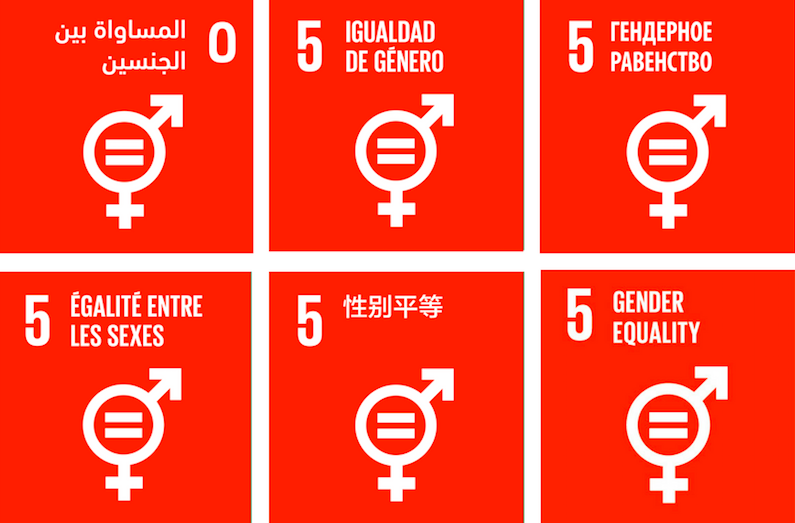
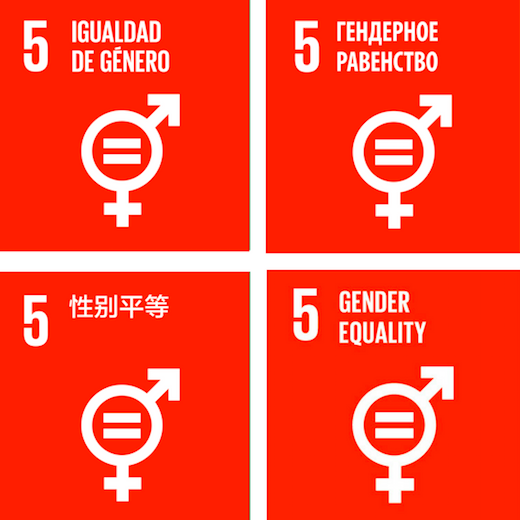
Bloomberg recently convened the first ever single-issue business summit to focus on SDGs, which pulled a number of threads together and charted a path for reaching agreement on common goals.
Socially responsible businesses have been buzzing around the edges of the United Nations Sustainable Development Goals (SDGs) for more than three years. However, there has been little attempt to reach a common understanding of what the goals mean for business. Until now, that is.
Last month, Bloomberg convened the first single-issue business summit to focus on SDGs. While there is still much to learn, the half-day gathering pulled a number of threads together and charted a path for reaching agreement on common goals.
What are the Sustainable Development Goals?
The United Nations SDGs comprise a 15-year initiative that calls for global progress in 17 specific areas by 2030. This initiative grew from an earlier global anti-poverty initiative called the Millennium Development Goals.
The 17 SDGs combine lessons learned from that legacy program with a renewed focus on the environment.
As described by the U.N., the SDGs “recognize that ending poverty must go hand-in-hand with strategies that build economic growth and addresses a range of social needs including education, health, social protection and job opportunities, while tackling climate change and environmental protection.”
The SDG challenge for business
The problem for business is that the SDGs measure and track progress by nations. There is no set formula for translating the 17 goals into pathways that fit neatly into other forms of corporate reporting.
Nevertheless, last month’s Bloomberg Sustainable Business Summit on the SDGs established some points of commonality. The tone was set by the host of the Summit, Lee Ballin, head of Sustainable Business Programs at Bloomberg.
Ballin described the SDGs as a “roadmap for humanity.” Each one creates an opportunity for businesses. That opportunity lies in the gap between what nations hope to achieve by 2030 and the amount of money needed to reach those goals—$2.5 trillion, according to Ballin.
To be clear, few—if any—businesses can fit the entire slate of 17 SDGs into their operations. However, almost any business can identify and adopt SDGs that benefit their bottom line while also promoting global progress.
The nitty-gritty of the Sustainable Development Goals
That sounds simple enough, but the devil is in the details.
Michael Green, CEO of the Social Progress Imperative, described the SDGs as “spectacularly complicated,” “hugely complicated,” and “very hard to measure because the data is absent.”
He also cautioned that, for nations, the SDGs are not an “a la carte” prospect. Some of the goals are much harder to achieve than others, and some nations are already far behind with little if any prospect of catching up by 2030.
One solution for business, Green suggested, is to engage with more established platforms like the Social Progress Index. “The Social Progress Index doesn’t look like the SDGs,” he explained, “but it measures the same concepts and it does have the data to back it up.”
How investors can help achieve the SDGs
Another source of guidance is the United Nations Global Compact corporate sustainability initiative. With 71 chapters globally, the Global Compact engages companies of all sizes with sustainable strategies, on their home turf.
Lise Kingo, who is CEO and executive director of the organization, noted that about 80 percent of its members are already working with the SDGs. Kingo attributed the interest to corporate leadership. “In 68 percent of the companies that picked up [the] SDGs, CEOs were driving the agenda,” she said. “They are preparing their companies for a future of transformative innovation. They are looking at SDGs as the ‘lighthouse’ to the world in 2030.”
Kingo’s advice was straightforward: She recommended that investors look at opportunities through an SDG lens. She also advocated for using green bonds or SDG bonds, and to steer investment funds into areas that are compatible with the SDGs. “That’s the low-hanging fruit,” she said. “It’s not complicated.”
Choose an SDG that works for you
Engaging with the SDGs on a strategic level was another common theme to emerge from the summit. Carmen Villar, vice president for social business innovation at the leading pharmaceutical company Merck, described how her company is using SDGs to identify its strengths.
In addition to drawing from a number of SDGs, Merck focuses on SDG 3, to “ensure healthy lives and promote well-being for all at all ages.” That’s an obvious choice for a pharmaceutical company, but Villar cautions that businesses need to establish an action plan that engages every employee. She advised companies to ensure that their employees understand the SDGs.
Companies, along with their employees, also need to provide a toolkit that can be applied to new projects, and they need to be specific about their reporting.
SDGs and attracting talent
In terms of the benefits to the bottom line, Kathy Jackson, executive vice president of BCD Travel, articulated one of the most important benefits of the SDG approach for businesses: attracting the next generation of top employees.
Jackson explained that BCD Travel focused on five SDGs that answered the question, “Where can we make the greatest difference?” That question goes to the heart of BCD’s business model.
“The SDGs engage employees, attract new talent and develop careers,” Jackson explained. “Our five SDGs are relevant to our customers. They are part of our culture and part of our DNA,” she added. “It’s all about engaging employees, because you want them along with you on this journey.”
The takeaway on SDGs
In 2015, businesses seeking SDG compatibility had to start from scratch.
Today, businesses have more resources. They can rely on guidance from existing networks like the U.N. Global Compact. They can also deploy alternate reporting platforms like the Social Progress Index.
Watch for the SDGs to emerge as an effective planning tool. They enable companies to keep a finger on the pulse of global issues. They also steer companies toward actions that address the concerns of their customers, their supply chains and their employees.
Businesses can also think of the SDGs as one part of a growing toolkit that may include the Global Reporting Initiative (GRI) and other resources like the Corporate Reporting Dialogue.
All in all, engaging with the SDGs is another milestone for corporate social responsibility. The agenda provides a framework for companies to look beyond the traditional model of corporate giving. Through the SDGs, businesses can act more effectively on key issues of the day, from gun violence and freedom of the press to renewable energy and climate change.
The 17 Sustainable Development Goals (SDGs) to transform our world:
GOAL 3: Good Health and Well-being
GOAL 6: Clean Water and Sanitation
GOAL 7: Affordable and Clean Energy
GOAL 8: Decent Work and Economic Growth
GOAL 9: Industry, Innovation and Infrastructure
GOAL 11: Sustainable Cities and Communities
GOAL 12: Responsible Consumption and Production
GOAL 16: Peace and Justice Strong Institutions
GOAL 17: Partnerships to achieve the Goal
Image credit: U.N. Sustainable Development Platform/Facebook
AEG’s Staples Center: How One Venue Can Make A Global Sustainability Impact


AEG has tapped the Staples Center in Los Angeles to become a global showpiece for new technology that tackles carbon emissions through the energy-water nexus.
Leading sports and entertainment company AEG has a long history in sustainability, and now it has come up with a potentially game-changing pathway for sports arenas and other facilities to cut their carbon footprints. Last year, AEG tapped its Staples Center venue in Los Angeles to become a global showpiece for new technology that tackles carbon emissions through the energy-water nexus.
Game-saving also describes the new technology, as the system may help the sport of ice hockey survive—and even grow—in a warming world.
Sustainability at the Staples Center
The Staples Center opened in 1999 and has embarked on a sustainability mission ever since. By 2010, it became the first facility of its kind to develop a holistic environmental strategy, which achieved international certification in 2013.
This holistic approach enables AEG to spot emerging sustainability trends and act on them. Recent upgrades at Staples Center include 1,727 rooftop solar panels, banks of zero-emission fuel cells, flushless toilets and an LED changeover that was the first of its kind in the U.S.
In addition to acting on new technology, AEG also takes note of other hot topics in sustainability. In one example, last October AEG banned single-use plastic straws at Staples Center, except for special needs accommodation.
Staples Center and the energy-water nexus
AEG piloted a new energy-efficient climate control system at the Staples Center during the 2017-2018 hockey season, in a joint venture with the Los Angeles Kings pro hockey franchise and BluEco Technology Group. BluEco says its signature product, the Liquid Crystalline Turbex (LCT) system, can make venues more comfortable while sourcing water for ice rinks.
The system creates pure water by sucking humidity out of the ambient air, but it does not operate like a conventional air conditioner: LCT deploys water-attracting properties widely recognized in salt.
The challenge is to find an energy-efficient, economical way to extract water from the air. BluEco has added a number of innovative, proprietary engineering tweaks to accomplish that. Its environmental air-flow management system works at the molecular level to produce high-quality water while cleansing the air from particulates, allowing for significant energy savings.
BluEco originally designed the system as an outdoor setup, for use in disaster relief and other emergency operations. AEG recognized that the technology could help trim the carbon footprint of an indoor sports venue situated in a warm climate like Los Angeles by providing an energy-efficient way to reduce indoor humidity.
The hockey connection comes in on the water end. Hockey ice sheets use copious amounts of water, and the water must be clean and of high quality to avoid inconsistencies in the ice. During its inaugural 2017-2018 hockey season, BlueEco estimates that the system saved hundreds of thousands of gallons of water for the LA Kings. In water-stressed cities like Los Angeles, that’s worth writing home about.
One venue, global carbon impact
The challenge for BluEco was to demonstrate that it could develop an LCT arrangement that could function on a large scale, indoors instead of outdoors.
So far, it seems to be an overwhelming success. In a recent interview with 3BL Media, BlueEco CEO Scott Morris described how the system complements the existing air-conditioning equipment at Staples Center. “By putting this technology on the inside of a building, by stripping the moisture out, you're lowering the humidity level,” Morris explained. “Therefore, your air-conditioner systems won't have to work as hard. They become much more efficient as well, because we essentially take that load off the current HVAC system.”
AEG was able to take one of the three enormous chillers at Staples Center offline after installing the LCT system. “The results have been absolutely phenomenal. Quite frankly, much bigger than we even anticipated,” Morris said. “At Staples, we're looking at an energy reduction for them on a yearly basis [of] about 8.2 million kilowatt hours, which equates to about 8,200 metric tons as far as lowering your carbon footprint goes.”
Morris noted that the success at Staples Center could open up new opportunities to deploy the technology in a wide range of uses, from individual households to larger facilities like data centers, warehouses, laboratories and golf courses.
AEG appears to be one step ahead. Kelly Cheeseman, COO of the LA Kings and AEG Sports, notes that the LCT system fits into “the core of what our sustainability goals are, which is about reducing the overall carbon emissions for AEG.”
The company is already speaking with other teams in the National Hockey League, scouting for opportunities for similar installations that combine energy-efficient climate control with water supply.
Aside from taking on the energy-water nexus, the big sell is the bottom line. “The cost for kilowatt hours are different in every market,” Cheeseman explained. “But alone in LA, a seven-figure savings could be realized if we use the system to its full capabilities.”
The Staples Center participates in AEG’s 1Earth program for sharing environmental best practices among the company’s global fleet of arenas, convention centers and stadiums—offering a platform for successful pilots like the LCT system to roll out worldwide.
How a game-changing sustainability technology becomes game-saving
Daryl Evans enjoyed a successful career with the LA Kings before switching over to become the team’s on-air analyst for the iHeart Radio Kings Audio Network. That experience gives him an insider’s view on the potential for ice hockey to grow globally as an indoor sport. From his perspective, the sustainability aspect of BluEco’s LCT dovetails with the drive to provide both players and fans with a premium experience.
The purity of the water from the LCT system brings the quality of the skating surface closer to natural ice, "almost like skating outdoors on the East Coast in the middle of winter,” Evans said. “It's got a little bit more crispness to it, which makes it a little bit faster. The puck slides more freely. The players' skates glide more freely upon it. When you can enhance all those little individual aspects of the game, it increases the pace and makes for a more entertaining game.”
For Evans, it all comes down to increasing the number of ice surfaces available for games and bringing more young people into the sport. In a warming world, that may not happen outdoors. Evans already sees the writing on the wall. Hockey has to go indoors, and technology will make all the difference: “We don't have the consistency in our weather,” he said. “Whatever we do through science and technology, I think we can make it consistent. I think that's the big thing.”
Hockey is not the only sport taking steps to adapt to a changing climate. In the U.S., major sports circuits have been early adopters of clean tech that yields bottom-line benefits, along with improved sustainability. Standout examples include NASCAR, NFL teams like the Philadelphia Eagles, and all 30 Major League Baseball franchises.
Image credits: Staples Center/Facebook
Responding to Crisis: Learning from World Central Kitchen


If your company is interested in helping support humanitarian efforts, one of the best models from which organizations can learn about delivering results is World Central Kitchen.
Last month, World Central Kitchen (WCK) launched yet another humanitarian effort, this time in Venezuela. The goal: feeding citizens who have been going hungry, a crisis exacerbated when Venezuela and Colombia closed their border crossings after trucks hauling relief supplies were set ablaze while attempting to cross a bridge linking the neighboring countries. Once again, WCK showcased its agility as it tackled yet another crisis by viewing it through the lens of a chef.
This approach is one of the many reasons WCK, now almost a decade old, has become Chef José Andrés’s key passion, one that has proven its effectiveness at helping people. When Andrés sees people suffering due to natural disasters or political crises, he has shown repeatedly that he is quick at getting teams cooking—passionately and humanely.
The question is: How can companies that want to do good, and do it well, learn from WCK?
Always keep your vision in mind
We can find the answers in a few basic principles by which WCK abides. The first is having a vision. For WCK, that vision comes from Andrés, who began as a chef, one who loves food and has a passion about what it can offer people and cultures.
Andrés’s career developed on the cutting edge of molecular gastronomy—applying and experimenting with the physics and chemistry of cooking—but he always remained concerned about the larger picture of food in America and around the world. Only a few weeks after he arrived in Washington, D.C., he began volunteering at the D.C. Central Kitchen, where he helped prepare food for hungry neighbors and mentored cooks. He has since served on the nonprofit’s board and is now one of its chair emeriti. Over the past several years, Andrés has won countless awards, including the 3BL Forum ‘Brands Taking Stands' 2018 Humanitarian of the Year award last fall; a U.S. congressman has since nominated him for the 2019 Nobel Peace Prize.
One result of this passion is that now Andrés is in the news more for his humanitarian relief accomplishments than the dishes in his restaurants. “Chefs of America, we should be more outspoken about the way we are feeding America . . . We should be more committed about the other 97 percent of Americans that don’t come to our restaurants,” Andrés told Anderson Cooper during a 2017 interview on "60 Minutes."
WCK’s success is inextricable from its vision, which helps to keep it moving and ready for the next humanitarian crisis. If your company is interested in helping support humanitarian efforts, ask yourself: What are the higher principles behind your work? Keeping those principles in mind can do much to inspire community service while building coalitions on the ground.
Find your niche and adapt it to various contexts
A good place to start measuring the effectiveness of any humanitarian aid program is with the OECD (Organization for Economic Co-operation and Development)—the intergovernmental organization tasked with stimulating economic progress and world trade. The OECD published a paper in 2014 on the characteristics and practices of effective humanitarian aid. Andrés’s WCK checks off many of this report’s boxes, but, more importantly, the group already achieves what the report outlines as future aspirations.
Finding your own way to respond is one of these most important goals. Next, an organization must be able to adapt to different situations, locations and peoples. WCK is a perfect case study of both how to develop a response as well as how to shift focus quickly when necessary.
WCK’s strength is its ability to bring leaders and volunteers together: The NGO’s resources are not food supplies and equipment, but chefs, kitchens and volunteers who are already on the ground. Time and time again, WCK's strength has been its ability to respond to the needs of specific locales—building relationships, teaching, creating local jobs and supporting social enterprise. “To a chef, the world is full of kitchens, each one an opportunity to get involved and feed people in need,” Andrés told TriplePundit in a 2018 interview. The organization’s local partnerships allow WCK to be flexible, adaptable and responsive all around the world.
For example, WCK cooked Thanksgiving dinner for people affected by California’s wildfires last year. As is the case with many of the organization’s relief efforts, WCK was in “rapid response” mode. In areas where wildfires upended lives, WCK began work in local kitchens soon after arriving in the Golden State, while partnering with California’s Office of Emergency Services, the Red Cross, the Salvation Army, Operation BBQ Relief and another celebrity chef, Guy Fieri, to feed first responders and people temporarily housed in shelters.
In Venezuela, WCK’s work faced a different challenge: While those affected by California’s wildfires were often huddled in shelters after being evacuated, Venezuelans were fleeing their country, often because of hunger. WCK staff and volunteers first started their work by distributing bag lunches to shelters in Cúcuta, a city on the border of Venezuela and Colombia. During this process, the team was also learning from Venezuelans and experts in the region so they could plan next steps in the event the crises worsened—which ended up being the case. The result was a system where meals cooked in the Cúcuta kitchen were then delivered to shelters along the routes Venezuelan refugees were traveling in order to provide them sustenance.
Responding quickly and effectively requires being flexible
What is there to learn from WCK’s modus operandi? Helping people in dire need requires applying your expertise with flexibility while listening every step of the way. A one-size-fits-all approach can come across as heavy-handed, slow and ineffective. If your company is looking to assist with humanitarian aid in a region that needs immediate help, consider the lay of the land; what local organizations you’ll be partnering with; the local infrastructure you can use to carry out your work with locals, experts and volunteers; and who you’ll be listening to so your company can refine tactics and plan for the next steps.
With a problem as complex and time-sensitive as emergency humanitarian aid, it is important to start simple by learning about the problem on the ground and then plan from there. An intervention as small as handing out bag lunches can make a world of difference in the moment, but it is critical that your company first ensures that the capacity and solutions it has match the needs of the local population, whether that is feeding people on the go in Venezuela or helping locals celebrate a holiday in the midst of a disaster in California. And most of all, let your vision guide your actions.
Image credit: World Central Kitchen/Facebook
Philanthropy to Purpose: Corporate Social Strategy Expands


This new program that CECP: The Force For Good recently launched is the latest evidence of how business is transforming its models to align with the Brands Taking Stands movement.
CECP: The Force For Good has launched a new initiative, one that doubles down on the social strategy that has been the organization’s core focus since it was founded 20 years ago. The Investing in Society program is a “compendium of data, research, and case studies illustrating innovations in corporate efforts to solve the world’s most pressing problems.” The anthology is divided into five sections—Priorities, Performance, People, Planet, and Policies—that offer an overview of strategies and practices in each of these areas. The guiding principle is what is being done to “build a better world through business.” The overarching target subject is stakeholder needs, not shareholder dividends.
Acknowledging how much executive leadership matters, the Policies section addresses that key issue by asking, “What are companies doing to promote corporate governance through top-line decisions?” Analyzing those actions through the filter of social strategy, CECP’s new program is the latest evidence of how business is transforming its models to align with the Brands Taking Stands movement.
The back story
Several years ago, I attended an energizing conference sponsored by the Committee Encouraging Corporate Philanthropy—CECP. CEOs, heads of foundations, investors, thought leaders, and CSR professionals convened in one of the more useful meetings of its kind I have attended. The talk was wide-ranging and insightful but always centered around the business case for a social strategy—how a company engages with key stakeholders—employees, communities, customers, and investors—to define success. To support this model, CECP helps “companies transform their social strategy by providing customized connections and networking, counsel and support, benchmarking and trends, and awareness building and recognition.”
That mission has grown dramatically since CECP was founded in 1999 by actor Paul Newman and other business leaders. Today, CECP counts as members 250 of the world’s largest companies that represent $6.6 trillion in revenues, $21.2 billion in social investment, 14 million employees, and $15 trillion in assets under management. With those kinds of numbers, the potential for positive impact is equally large.
Giving is still a good thing
The first CECP product I encountered was “Giving in Numbers,” its annual survey that sets benchmarks for corporate social investments. After 13 years of compiling and publishing the research, Giving in Numbers continues to be a valuable report, used by professionals to evaluate how corporations invest in society. In the 2018 edition, produced in association with The Conference Board, the news about philanthropy is good: total median giving increased by 15 percent compared to three years ago. The analysis of 2017 corporate giving and employee engagement data from more than 300 of the world’s largest companies showed an aggregate of $23.8 billion in giving and that 9 out of 10 companies match employee donations. Especially noted were corporate efforts aimed at disaster relief by UPS, Verizon, and Bank of America; at diversity and inclusion by Deloitte, Symantec, and Mastercard; and at military and veterans by USAA, Comcast, and Boeing.
What’s next for business in a purpose-driven climate?
At its most recent Forum, polling of the 60 attending CEOs produced this list of their top three business challenges: 1) Prepare for the future of work, 2) Employee diversity and inclusion, and 3) Mitigating short-termism. Further, 67 percent of CEOs reported that “the most effective bold move they can make toward sustainable business leadership over the long term is to speak publicly, in their own voice, on what their companies are doing and why.” You will note that there’s no mention of traditional CEO concerns such as markets, the competition, or profits as top problems. The underlying assumption in the three issues singled out is that if chief executives get it right about those identified challenges, the company will prosper and thrive, and investment will follow.
A change of name reflects a future forward direction
To underline this move to executive leadership and long-term investment, CECP has re-branded its acronym to Chief Executives for Corporate Purpose. The change marks the evolution of the organization after 20 years of practice to align its mission with the increasing connection being drawn today between a corporation’s profits and its purpose. Its original mission continues: “We steadfastly remain the CECP that corporate teams trust to help transform their social strategy,” says CEO Daryl Brewster. “We are an essential partner for business committed to solving the world’s most pressing problems.”
But redefining the “CP” as “Corporate Purpose” implies a much deeper engagement on the part of chief executives, and is an acknowledgement that the idea of corporate social responsibility is expanding from traditional philanthropy to the bottom line, driven by the increased interest of investors in the sustainability of long-term value creation. Creating value for a company is the major part of a CEO’s job definition, and investment in public companies plays a key role in setting strategy, from stock pricing to growth.
The bottom line
This re-branding aligns CECP with the current Brands Taking Stands movement, which looks to chief executives for leadership on key social issues. By convening the collective wisdom of the CEOs of its 250 member companies, the CECP coalition is perfectly positioned to make a large social impact as companies plan and act to ensure the future growth of their businesses through social strategies.
Previously published in the weekly Brands Taking Stands Newsletter - be sure to subscribe!
Image credit: Pexels
Can Standardized Emissions Reporting Prevent Another Dieselgate?


Volkswagen's so-called "dieselgate" emissions scandal highlights the need for standardized reporting on avoided emissions.
Reporting on avoided emissions aids comparison between sustainable products and their competition. It is the difference in emissions from using, for example, fuel-efficient tires versus their counterparts. There’s just one big issue with this seemingly useful data—companies can skew their reports, and it’s difficult to verify their claims.
We saw this most prominently with Volkswagen’s so-called “dieselgate” emissions scandal back in 2015. According to the U.S. Environmental Protection Agency (EPA), the company manipulated its diesel engines to engage emission controls during testing, but not during real-world driving. Research indicates that Volkswagen vehicle emissions exceeded U.S. regulations by over 40 times their limit.
A standard model for evaluating avoided emissions could provide clarity for consumers and other stakeholders—and prevent a scenario like dieselgate from happening again. Let’s take a closer look.
Looking back: The ‘dieselgate’ emissions scandal
The Volkswagen dieselgate scandal came to a head in 2015 and has since evoked an onslaught of lawsuits from government agencies, the most recent case being from the U.S. Securities and Exchange Commission. It involves a decade of deceit spurred by the inability of the company’s new diesel engine, introduced in 2005, to meet U.S. and European emissions restrictions. Software was later installed to disguise the engine’s shortfalls during testing. These diesel engines were key in Volkswagen’s ambitions to become the world’s largest car maker. The diesel Jetta TDI, released in 2009, sold out immediately in the U.S., partly based on emissions claims.
The scheme began unraveling in 2015 after a research study conducted by West Virginia University revealed discrepancies between vehicle road tests and reported findings. Within two weeks, nearly US$37.5 billion of Volkswagen’s market value was erased.
Newly appointed CEO Herbert Diess shows promise in realigning the company’s culture toward clarity and frankness with investors. Volkswagen plans to be carbon-neutral by 2050. It has been putting its money where its mouth is by increasing research and development expenses by 3.8 percent from last year to expand into electric vehicles.
Standardized avoided emissions reporting offers clarity
It is in the best interest of companies such as Volkswagen—and all stakeholders—to have a standard system of assessing avoided emissions. Without an agreed-upon framework, it is up to individual companies to define and measure avoided emissions, causing inconsistencies. A loose definition of avoided emissions also leaves loopholes in the guidelines for multinational companies such as Volkswagen.
A proposed framework in a recent research publication offers solutions to this issue. The system, called the Product Standard, is designed to facilitate informed decisions for companies looking to reduce their products’ emissions. The importance of the Product Standard has been emphasized by Volkswagen’s bout of troubles and increasing stakeholder and consumer demands for clarity in products’ greenhouse gas emissions. The research from the World Resources Institute (WRI) addresses these concerns by tailoring the Product Standard to individual companies and products.
A car maker such as Volkswagen can use the Product Standard to gradually improve the emissions of its various models. The system provides the guidelines needed to identify key issues, coordinate solutions and verify companies’ emission claims. Consumers can further utilize the system to compare models and be assured of accuracy in results.
There is a clear need for a measurement method of avoided emissions, and the Product Standard offers an option that didn’t exist before. The benefits for consumers, businesses and shareholders would be enormous as we work toward a sustainable future.
Image credit: Shrek/Flickr